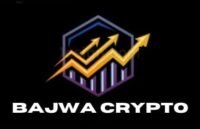Technical analysis is a critical tool used by cryptocurrency traders and investors to predict market movements and make informed decisions. By analyzing past price movements, trading volume, and other market data, technical analysis aims to identify patterns and trends that can guide future trading strategies. In this article, we explore the fundamentals of technical analysis and its application in the volatile crypto market.
What is Technical Analysis?
Technical analysis (TA) is a method of evaluating financial assets by examining historical price data and market activity, such as volume. Unlike fundamental analysis, which focuses on the intrinsic value of an asset, TA relies on the belief that market patterns and trends tend to repeat over time.
Key Principles of Technical Analysis
Price Reflects All Information: TA assumes that all relevant information, including market sentiment and news, is already reflected in the asset’s price.
Prices Move in Trends: Assets move in identifiable trends that can be upward, downward, or sideways.
History Tends to Repeat Itself: Market behavior often follows repetitive patterns due to human psychology.
Essential Tools and Indicators for Technical Analysis
1. Charts
Candlestick Charts: Provide insights into an asset’s open, high, low, and close prices over a specific period.
Line Charts: Display the closing price over time, useful for identifying trends.
2. Support and Resistance Levels
Support: The price level where an asset tends to stop falling and may rebound.
Resistance: The price level where an asset tends to stop rising and may decline.
3. Moving Averages (MA)
Simple Moving Average (SMA): Averages prices over a specific period, smoothing out short-term fluctuations.
Exponential Moving Average (EMA): Gives more weight to recent prices, making it more responsive to changes.
4. Relative Strength Index (RSI)
Measures the speed and change of price movements. RSI values range from 0 to 100, with levels above 70 considered overbought and below 30 oversold.
5. Bollinger Bands
Use standard deviation to create bands around a moving average. They help identify overbought or oversold conditions.
6. Volume Analysis
Higher trading volumes often confirm the strength of a price movement.
Applying Technical Analysis to Crypto Markets
1. Identifying Trends
Use moving averages and trendlines to determine the overall direction of the market. For example:
An upward trend is characterized by higher highs and higher lows.
A downward trend shows lower highs and lower lows.
2. Recognizing Patterns
Head and Shoulders: Indicates a potential reversal from an uptrend to a downtrend.
Triangles: Show periods of consolidation before a breakout.
3. Timing Entries and Exits
Combine indicators like RSI and Bollinger Bands to identify ideal buying and selling points.
4. Managing Risk
Set stop-loss orders to limit potential losses and define risk tolerance before entering a trade.
Benefits of Technical Analysis
Data-Driven Decisions: Reduces emotional trading by relying on objective data.
Versatility: Applicable to any time frame, from short-term trading to long-term investing.
Accessibility: A wide range of tools and indicators are available for free on trading platforms.
Limitations of Technical Analysis
Market Volatility: Cryptocurrency markets are highly volatile, which can lead to false signals.
Subjectivity: Different traders may interpret the same chart patterns differently.
Past Performance is Not Always Indicative: Historical data may not always predict future movements accurately.

Just thinking about you gives me chills… come closer – https://rb.gy/es66fc?learry
Заказать Haval – только у нас вы найдете цены ниже рынка. Быстрей всего сделать заказ на хавал джолион официальный дилер цены можно только у нас!
хавал джолион официальный дилер цены
цена хавал джолион новый в уфе – https://jolion-ufa1.ru/